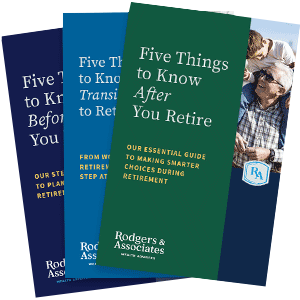In most cases, it is better to designate your heirs.
Many people assume that naming heirs in their will is sufficient and that there is no need to duplicate those beneficiaries in their IRAs or in their company retirement plans. This is far from true. Be sure to designate primary and contingent beneficiaries for all your retirement accounts using the proper paperwork provided by your custodian or plan administrator. Beneficiaries can certainly mirror your will if that is your intent. There are several compelling reasons for naming beneficiaries in your IRA.
Here are four reasons not to name your estate as an IRA beneficiary:
1. Probate expenses
When an IRA is payable to an estate, it becomes part of the assets distributed by the will, which subjects those assets to probate. This can lead to additional costs and delays, as the fees for probating a will, along with executor and attorney fees, are typically based on a percentage of the estate’s value.
In contrast, if the IRA is distributed directly to named beneficiaries, this process can be managed directly with the account custodian. This method is generally faster than probate and may incur only minimal fees for account openings or closings, depending on the custodian. Furthermore, probate proceedings are a matter of public record, which means there is no privacy regarding the estate’s details.
2. Distributing the IRA
The SECURE Act, passed in December 2019, created three different categories of beneficiaries: Eligible Designated Beneficiaries, Designated Beneficiaries, and those who are Non-Designated Beneficiaries. It also modified the distribution rules for IRAs after the account holder’s death, effective January 1, 2020. Suppose your IRA is payable to an estate, which counts as a Non-Designated Beneficiary. In that case, the funds must be distributed within five years of your death if you pass away before your Required Beginning Date (RBD). The RBD is defined as April 1 of the year following the calendar year in which you reach age 73 if you were born on or before December 31, 1959, or age 75 if you were born on or after January 1, 1960. If you die after your RBD, distributions must occur over your remaining single-life expectancy. Additionally, while distributions are being made, the estate must remain open, which requires filing a tax return each year.
3. Estate income taxes
If distributions are made from the IRA while the estate holds it, then these will be taxed at unfavorable estate tax brackets. For an estate, the top bracket (37%) applies to taxable income over $15,650 in 2025. In contrast, for an individual (filing single), the top bracket (37%) applies to taxable income over $626,350. For a couple (married filing jointly) the top bracket (37%) applies to taxable income over $751,600.
4. Greater growth potential
An IRA left to a spouse can be rolled directly into the spouse’s own IRA, allowing for continued tax-deferred or tax-free growth. No distributions are required until the spouse reaches their required minimum distribution (RMD) age. Additionally, an IRA inherited by a spouse also has creditor protection.
If an IRA is left to any other Eligible Designated Beneficiaries, the account balance must be withdrawn over the longer of the beneficiary’s or the owner’s life expectancy. Eligible Designated Beneficiaries include the owner’s spouse, minor children (until they reach the age of majority), disabled individuals, chronically ill individuals, those who are not more than 10 years younger than the deceased, and certain trusts.
An IRA left to a Designated beneficiary can be rolled into an inherited IRA, which also allows for tax-deferred or tax-free growth. However, all funds in an inherited IRA must be withdrawn within 10 years. Leaving an IRA to your spouse or child is a powerful way to help them plan for their retirement, but it should be done correctly to minimize taxes.
One of the few situations where naming your estate as the beneficiary of your IRA makes sense is if 100% of your estate is going to charity. Otherwise, it’s advisable to designate primary and contingent beneficiaries for all your retirement accounts. Review these designations annually or whenever there is a major life change, such as death, marriage, divorce, the birth of a new child, or the arrival of a grandchild, and update them as necessary.
This article was originally published on August 19, 2020, and was updated for accuracy and relevance on the date above.


